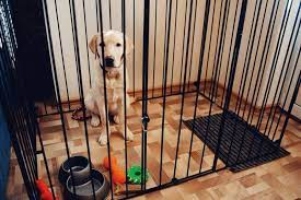Dog
What to Expect After Your Dog Has Been Dewormed?
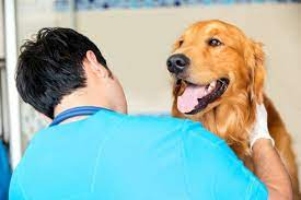
Dogs are naturally inquisitive creatures who explore much of the environment with their lips and noses. This, regrettably, means that intestinal worms are a frequent and ongoing menace. Using a deworming therapy to treat your dog’s worm infestation will solve the issue fast and efficiently. The most popular methods for treating and controlling worms in dogs are pills and topical medications. The treatment is typically easy to administer after you’ve identified the proper product for your dog. But what happens after you have given your dog worming medication? What to expect in the initial hours and days following deworming is listed below.
The initial week following a deworming treatment
Deworming your pet at home, where they feel safe, is a wonderful idea. Select a peaceful weekend if at all possible so that your pet won’t be stressed or overly thrilled and that you’ll have time to watch over your dog following the deworming treatment Like giving your pet a treat, deworming your dog is a fairly easy operation. In order to ensure your dog thoroughly eats the tablet if you use a tablet-based deworming therapy, it may be good to conceal the pill in a treat like cheese, peanut butter, turkey, or wet food. Some pills don’t even need to be disguised in food because they are already flavoured to taste like a treat to your pet. Even if it’s flavoured, some dogs may try to spit up a tablet right away or even minutes later, so masking the medication as a treat might make the process simpler for both you and your dog.
Dogs may occasionally vomit quickly after taking a dose of any oral medication. Observe your pet for vomiting for two to three hours after giving them the deworming tablet if they are a puppy or have a history of consuming food or water too quickly and becoming ill. If your dog throws up the tablet whole, wait a short while for them to settle down before giving them the medication again. Contact your veterinarian to receive a new dose if the tablet is only half digested or not at all visible. There are other topical deworming treatments available if your dog despises pills and is well-versed in your tactics. Regardless of the deworming solution you choose, the treatment usually starts working within a few hours, and your dog should act as normal by then.
After a Few Days, the Deworming Process
You could or might not notice worms in your dog’s faeces in the days after a deworming therapy, depending on the type of worms that dog has. Roundworms, hookworms, and whipworms are typically treated with deworming medicines by paralysing and killing the parasites; tapeworms are typically killed and divided into smaller segments. You won’t even see any intestinal worms in your dog’s stool if it has hookworms or whipworms since they are so little.
Even though your dog has been dewormed, it’s usual to still find live worms in their stools. Despite the terrible visual, this actually implies the worms are no longer living inside your dog, which is a positive thing. Additionally, for a few days after treatment, you might notice dead worms in your dog’s faeces, or your dog can experience diarrhoea as the dead worms are digested. Regardless of what you notice in their faeces, recently dewormed dogs typically act normally. A few weeks after their initial deworming treatment, puppies and other dogs may need further treatments. This frequently depends on the kind of worm and product employed. Consult your veterinarian if you have any questions about a deworming schedule for your dog.
Why Do I Need to Worm My Dog?
While significant health issues are rarely brought on by worms, they can nevertheless make your dog feel less than their best. This is due to intestinal worms that reside in your dog’s digestive system and feed on its blood and nutrition. Scooting, a poor coat, weight loss, low energy, and diarrhoea are all signs of worm infestation. Young puppies are especially at danger, and if a significant worm infection is not treated, it can cause severe intestinal blockage, anaemia, malnutrition, and even death.
Some worms, such roundworms (also called Toxocara), can be transmitted to people. Toxocara can have major side effects, especially in kids. Fortunately, routine dog deworming can help to safeguard both your family and your pet. The best approach to keep worms at bay is simple to implement.
Have You Heard?
Freshly discharged faeces from your dog are often not a Toxocara risk. Although roundworm eggs are typically found in the dog’s faeces, they must develop for about two weeks before becoming contagious. This is why it’s crucial to promptly clean up after your dog and properly dispose of the waste.
Establishing a Future Plan
Even after your pup has completely been dewormed, there is still a chance that they could contract the infection again. Keeping your dog on a monthly heartworm prevention medication that both treats and manages common intestinal worms is the greatest approach to prevent them from getting intestinal worms. These medications or topical solutions are simple to use, safe, and readily available.
Dog
Wheelchairs for Dogs Enhancing Mobility and Quality of Life
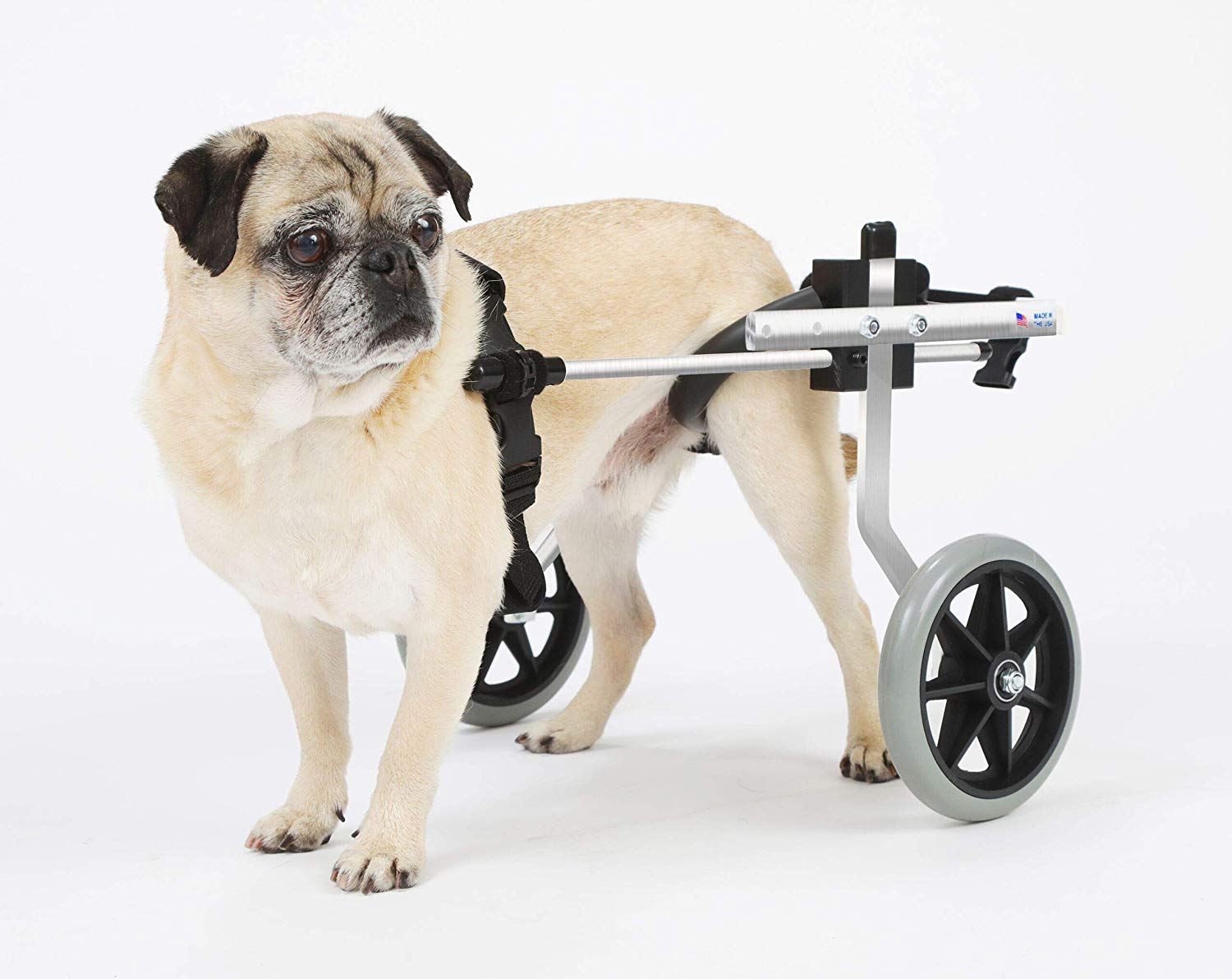
For many pet owners, dogs are more than just animals they’re cherished companions who bring immense joy and companionship. Unfortunately, some dogs experience mobility challenges due to injuries, illnesses, or congenital conditions that affect their ability to walk or run. Fortunately, technological advancements and innovative solutions have paved the way for the creation of specialized wheelchairs designed specifically for dogs. These devices play a crucial role in improving the mobility and overall quality of life for these beloved pets.
Understanding the Need for Dog Wheelchairs
Dogs can encounter mobility issues due to various reasons, including spinal injuries, degenerative diseases, neurological disorders, and limb amputations. Such conditions can severely limit a dog’s movement and impact their independence. Wheelchairs for dogs provide essential support by assisting in weight-bearing, enabling them to move freely, exercise, and engage in regular activities without excessive strain or discomfort.
Design and Functionality of Dog Wheelchairs
Dog wheelchairs are custom-built devices tailored to fit the unique anatomy and size of different dog breed. These wheelchairs typically consist of a frame, wheels, straps or harnesses, and padding for comfort. The design varies based on the dog’s needs rear support for hind limb weakness, front support for forelimb disabilities, or full-body support for dogs with more complex conditions.
Most wheelchairs are adjustable, allowing for modifications as the dog’s condition progresses or changes. They’re lightweight and crafted from durable materials to ensure ease of movement and durability. Some models even come with accessories such as all-terrain wheels for outdoor adventures or additional support for stability.
Benefits of Using Wheelchairs for Dogs
The advantages of dog wheelchairs are manifold. Primarily, these devices restore mobility and independence, enabling dogs to move around freely, exercise, and participate in activities they previously enjoyed. Enhanced mobility helps prevent muscle atrophy, maintains joint flexibility, and contributes to better overall health.
Additionally, wheelchairs can improve a dog’s mental well-being by reducing frustration and anxiety associated with limited movement. It fosters a sense of normalcy and allows them to remain an active part of their family’s life. Moreover, dog wheelchairs can alleviate the burden on pet owners, making it easier to care for their disabled pets and reducing the risk of caretaker burnout.
Adoption and Adaptation to Dog Wheelchairs
Introducing a dog to a wheelchair requires patience and positive reinforcement. Initially, some dogs may be hesitant or uncomfortable with the device. Training and gradual introduction play a crucial role in helping them adapt. Encouraging them with treats, short sessions, and gentle guidance can help dogs become accustomed to the wheelchair.
It’s essential to monitor the dog’s comfort and make necessary adjustments to ensure the wheelchair fits properly without causing any discomfort or chafing. Regular checks and proper maintenance are vital to ensure the wheelchair remains functional and comfortable for the dog.
Impact on the Pet-Owner Relationship
The use of wheelchairs can deepen the bond between pets and their owners. Owners often witness their dog’s determination and resilience, strengthening their emotional connection. Furthermore, the satisfaction derived from witnessing their pet’s improved quality of life reinforces the sense of companionship and care.
Conclusion
Wheelchairs for dogs are invaluable tools that significantly improve the lives of disabled or mobility-impaired pets. These devices not only restore freedom of movement but also contribute to the overall well-being and happiness of the dog. The advancements in veterinary medicine and technology continue to drive innovation in creating more tailored and effective solutions, providing hope and support for dogs and their loving owners.
Through these wheelchairs, dogs can continue to enjoy a fulfilling life, filled with love, play, and companionship, reaffirming the timeless bond between humans and their furry companions.
Dog
Understanding Dog Constipation
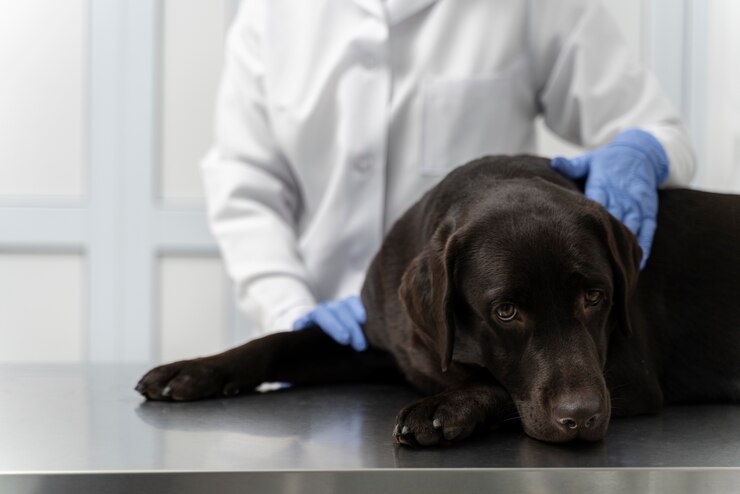
Dogs are cherished friends that are renowned for their lively nature and unwavering devotion. But just like people, dogs can have health problems, and constipation is a typical ailment that they face. It’s critical for responsible pet owners to be aware of the warning symptoms, comprehend the underlying causes, and understand how to treat and avoid constipation in dogs.
What Is Constipation in Dogs?
Constipation in dogs is the inability to easily pass stool due to irregular or difficult bowel motions. Dogs typically urinate once or more times a day, according to their age, diet, and general health. Constipation in dogs results in firm, dry stools that are difficult to pass, which can be uncomfortable and possibly lead to health issues.
Dog constipation causes:
Dog constipation can be caused by a number of things, such as:
- Dietary Problems: Constipation may result from abrupt dietary changes or inadequate fiber consumption. Low-fiber diets might cause firmer, more difficult-to-pass stools.
- Dehydration: Drinking too little water can make the body absorb additional moisture from the feces, which makes it harder to pass and dry.
- Absence of Exercise: Getting regular exercise encourages bowel movements. Dogs that lead sedentary lives may be more prone to constipation.
- Obstructions: Eating non-digestible materials such as hair, bones, or foreign objects can clog the digestive track and cause constipation.
- Underlying Medical Conditions: Disorders such enlarged prostates, anal gland disorders, neurological diseases, or digestive system cancers can cause
Symptoms of Dog Constipation:
Identifying constipation symptoms in dogs is crucial for early intervention. Look out for the following signs:
- Straining: Continuous attempts to defecate with little or no results is a telltale sign of constipation.
- Dry, Hard Stool: Stools that are dry, hard, and smaller than usual indicate constipation.
- Abdominal Discomfort: Your dog may show signs of discomfort, such as restlessness, whining, or a hunched posture due to abdominal pain.
- Loss of Appetite: Constipated dogs might lose their appetite or show a decreased interest in food.
- Vomiting: In severe cases, constipation can lead to vomiting, as the gastrointestinal tract becomes impacted.
Treating Dog Constipation:
If you suspect your dog is constipated, it’s essential to consult a veterinarian for proper diagnosis and treatment. However, some measures can help alleviate constipation:
- Dietary Changes: Adding fiber-rich foods like pumpkin, sweet potatoes, or bran to your dog’s diet can soften stools and facilitate bowel movements.
- Hydration: Ensure your dog has access to fresh water at all times. Increased water intake helps soften stools and promotes bowel movements.
- Exercise: Regular exercise aids digestion and encourages bowel movements. Take your dog for walks or engage in active play sessions.
- Medication: Your vet may prescribe stool softeners or laxatives to help your dog pass stools more comfortably.
- Enemas or Manual Extraction: In severe cases, a veterinarian may need to perform an enema or manually extract the impacted stool under sedation.
Preventing Dog Constipation:
Prevention is key in managing constipation in dogs:
- Balanced Diet: Feed your dog a well-balanced diet with adequate fiber content to promote healthy digestion.
- Hydration: Ensure your dog drinks enough water to maintain proper hydration levels.
- Regular Exercise: Incorporate regular physical activity into your dog’s routine to support gastrointestinal health.
- Monitor Health: Regular veterinary check-ups can help detect and address any underlying health issues that may lead to constipation.
Conclusion
Dog constipation can be uncomfortable and concerning for both pets and owners. By understanding the causes, recognizing symptoms, and taking preventive measures, pet owners can help their dogs maintain healthy digestion and overall well-being. Consulting a veterinarian for proper diagnosis and guidance is essential in managing and preventing constipation in dogs.
Dog
Top Paw Dog Toys

When it comes to finding the best toy for your dog, there are a few factors that you should take into consideration. Whether your pet is a high energy or a low energy dog, you need to find a toy that will keep him or her engaged. If your pup enjoys playing tug-a-war, you should find a tug toy that will be durable and safe for use.
Rubber tug toy vs nylon tug toy
In the search for the perfect tug toy for your top paw dog, there are many to choose from. However, there are also some important things to look for. For example, you want a tug toy that is safe for your dog and that is also made of quality materials.
The best tug toy is one that is comfortable for your dog to hold and that is able to withstand a lot of chewing. You’ll also want to look for a tug toy that has a handle on it, as this will make it easier for you to grip it.
Some tug toys have balls on them, while others are just rubber rings. Fortunately, most of these toys are easy for your dog to grasp, even with a slobbery mouth. Using a tug toy as a replacement for fetch is a great way to keep your dog’s brain active and busy.
If you are looking for a durable tug toy for your top paw dog, you may want to consider using a nylon toy. This type of toy is made from FDA-compliant, non-toxic materials, so it’s safe for your pet. It also helps to reduce chewing and separation anxiety.
Chuckit! orange balls are able to grind down teeth
If you’re looking for the best dog toy you should look at some of the products made by Chuckit. There are a wide variety of toys and accessories that are sure to keep you and your pet occupied for hours on end. You can get balls in all shapes and sizes as well as a variety of different sized launchers to match. Some of the better ones are made of durable hard plastic, while others feature a lightweight polyester. These are particularly useful if you plan on fetching your dog alone.
The best thing about these fun toys is that they are designed to be both durable and cheap to boot. In fact, a couple of the higher brow ones can cost you over $30. One of the more affordable products is the Fetch and Fold ball launcher. This one features a squeaky ring to boot. It is easy to use and keeps your pet occupied for hours on end.
West Paw Products treat dispensers are dishwasher-safe
West Paw Products treat dispensers are dishwasher-safe and ideal for dogs. These products are made with durable materials and have a variety of designs to suit all types of breeds and age groups. You can fill them with treats, supplements or toys. The material is non-toxic and safe for your dog to chew.
West Paw offers a one-time love it guarantee, so you can be assured of your satisfaction. With this guarantee, you get a refund of the purchase price if you have a problem with the product.
West Paw is focused on making products that are environmentally friendly. They use recyclable materials and reuse parts of their products to keep waste to a minimum. Their dog toys are also BPA and latex free, so you can be sure your pets are playing safely.
Zogoflex is an infinitely recyclable material that is tough and durable. It works great for dry treats and floats in water, allowing for longer playtime.
-

 Exotic1 year ago
Exotic1 year agoChoosing Koi Fish From Petsmart
-

 Dog2 years ago
Dog2 years agoPomeranian Dog Best Bread Information
-
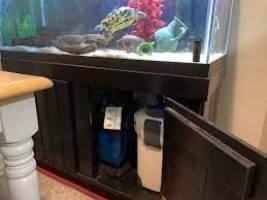
 Turtle2 years ago
Turtle2 years ago8 Best Filters For Turtle Tanks
-

 Turtle2 years ago
Turtle2 years agoPetSmart Crabs – The Right Way to Care For Your Pet Crabs
-

 Exotic10 months ago
Exotic10 months agoBuying a Bearded Dragon For Sale From PetSmart? Read This First
-

 Login10 months ago
Login10 months agoanimal shelters near me
-

 CAT1 year ago
CAT1 year agoBuying a Whisker City Water Fountain
-

 Dog2 years ago
Dog2 years agoLarge Münsterländer And Its Breed In 2022







